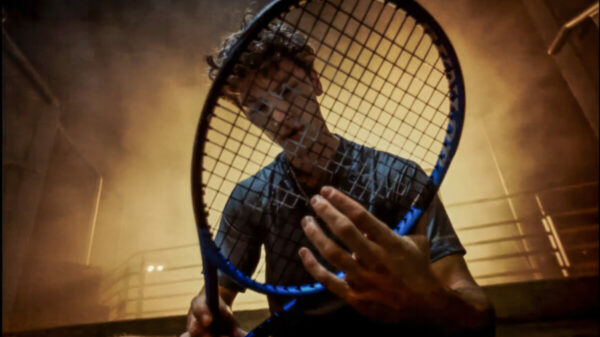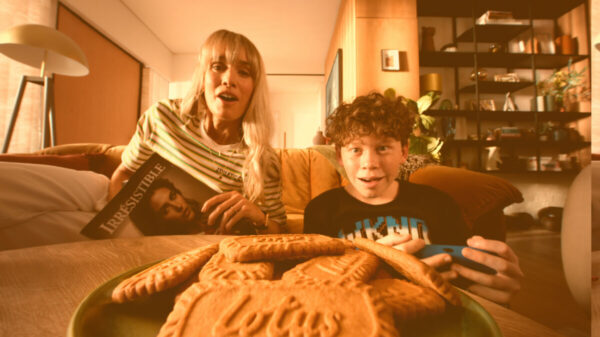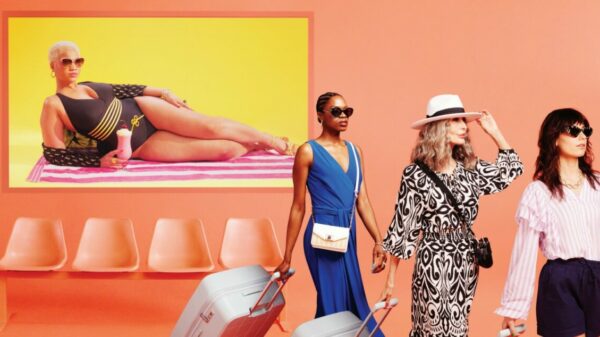Last month, media firm Global teamed up once again with Transport for London (TfL) and Contagious to relaunch this year’s ‘The Look Ahead competition’.
An opportunity for brands to showcase their creatives across the London network, last year’s competition was won in December 2022 by the Wayback – a virtual reality film series designed for those living with dementia which was launched during the pandemic.
Following its win, the campaign was awarded media space by Global on its new digital ribbon screens, placed strategically along the escalators of high-footfall London transport network stations, giving the initiative the crucial visibility it needed.
Dan Cole, co-founder and creative director of The Wayback and Anto Chioccarelli, Global’s creative solutions director for outdoor speak about the initiative, the competition and the importance of out-of-the-box thinking.
The Wayback campaign

“The initiative came about out of frustration from my dad dealing with dementia. You kind of feel quite helpless,” Cole begins, opening up about his own experience dealing with a loved one with the disease.
“Talking about memories, we found helpful actually because what exacerbates the disease is loneliness and lack of community.”
“It just takes a moment – a memory – to talk about their own experience”, he says, adding that it was those very conversations between careers and loved ones that inspired the team to begin working on the cross-generational tool.
The Wayback’s winning creative spanned 13 London Underground and Elizabeth Line stations, with the digital screens acting as windows into the past, creating the illusion that passengers were riding alongside commuters from the 1960s.
“The idea seemed quite simple,” Cole continues, speaking about The Wayback’s last-minute entry into the competition.
It turned out that he couldn’t have been further from the truth. The logistics behind shooting the unbroken creative needed to create the illusion posed a technical challenge that turned out to be more difficult than first thought.
Using a ‘spare’ TfL platform, the team spent weeks deliberating over how they were actually going to shoot the film, before settling on “trial and error and a wide lens on a camera”.
The power of visibility
The impact of The Wayback’s creative campaign extended beyond its target audience of dementia patients and their caregivers, reaching the general public as well.
“The power of visibility was crucial to the initiative and the exposure we had was incredible. We used this campaign as a test launch and went from double figures visiting the site, to thousands – which if you put it into percentage points, is absolutely crazy,” Cole reveals.
“What’s been interesting is that our downloads and visits have stayed quite steady as well. So it looks like it’s now coming from word of mouth, not just people who have seen the campaign.”
Chioccarelli, who acted as one of the judges on last year’s competition, described The Wayback’s entry as “powerful, optimistic, evocative idea”.
“The campaign raised the bar for creativity in outdoor and is a perfect case study to showcase the creative potential of the digital ribbon screens,” she says, adding that “outdoor advertising is a brilliant canvas to showcase high impact creativity”.
“The network reaches diverse audiences in creative ways so when a campaign is considered and well done, it is physically in an audience’s everyday life and can become part of culture too.”
Working with TfL’s digital ribbons
The challenge, Dan reminded, wasn’t just capturing a wide-angle shot but also dealing with TfL’s advertising restrictions and the impracticality of being deep underground, where QR codes and web addresses are unreliable.
“You’re relying on people to remember the name, take that thought with them and download it later on their way home; there’s no way around it.”
But, he emphasised, any limitations or technical challenges were far outweighed by “simply how much the campaign benefited from the initiative”. Rather than seeing TfL’s advertising guidelines as restrictions, the Wayback team viewed them as creative challenges to overcome.
“The technical challenges force you to create something more entertaining, more engaging, and more memorable – and I think that’s pretty cool.”
He pointed out that while brands advertising on TfL’s traditional staircases have split seconds to capture commuters’ attention, using the digital ribbons allowed The Wayback few extra seconds.
“Brands entering this year’s competition need to be aware they only have 10, 15, 20 seconds at most to hold a commuter’s attention, so you have to be a bit clever about it. You want to stay in their mind long enough for them to remember.”
Chioccarelli points out that “outdoor has been on a journey over the last few years”, with data and technology continuing to accelerate that progress, making it an “even more sophisticated platform with endless creative possibilities”.
“It’s bold and its confident and it’s a great canvas for brands to tell rich, layered stories which engage with people on a deeper level.”

Pushing future boundaries
Both Cole and Chioccarelli agree that entrants to this year’s competition needed to embrace ‘out of-the-box’ thinking to really push the boundaries with what could be created.
“It’s about moving people,” says Chioccarelli. “For this year’s competition, we’re challenging creatives to think about the eye-catching and shareable moments that outdoor can create. We’d like them to consider how they would use different formats to tell a creative story, but also the nuances of each format and how they’d use multiple screens to take people on a journey.”
“My advice,” she adds, “is to create a big, central idea and work out the most engaging way for it to come to life. Focus on moving people, literally and emotionally. Don’t create an idea that sits inside a frame, think beyond that to create an experience.”
Explaining how he would use the medium again, Coles says; “If I had another chance, I would recreate the campaign with a different era. I think for The Wayback, that would always be the way to use it – pulling people in, truly immersing them and letting them experience and see that kind of nostalgic detail.”
And those waiting for an encore needn’t wait too long, as Dan revealed that The Wayback is once again teaming up with Global for an exciting Christmas radio campaign, once again bringing the listener on a time capsule journey with them.
Born out of a desire to spark conversation, the impact of The Wayback’s campaign cannot be underestimated – both in terms of consumer awareness, but also in encouraging other brands to think outside of the traditional box.









